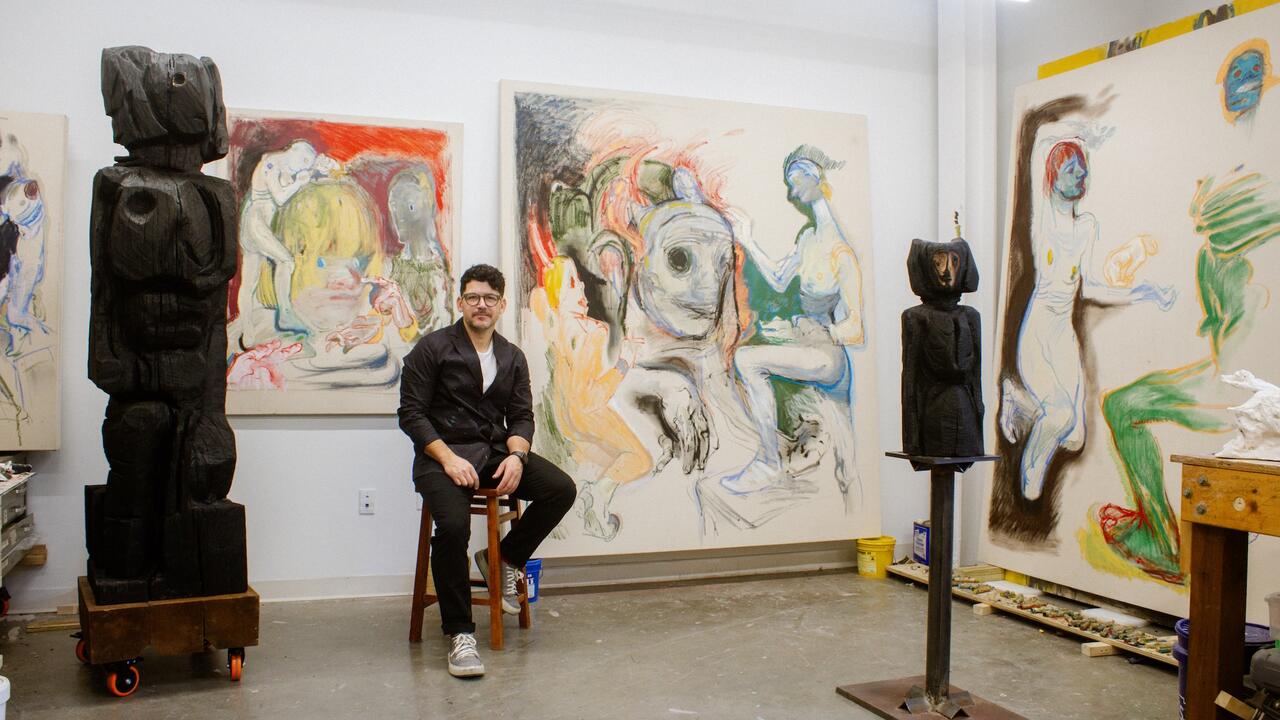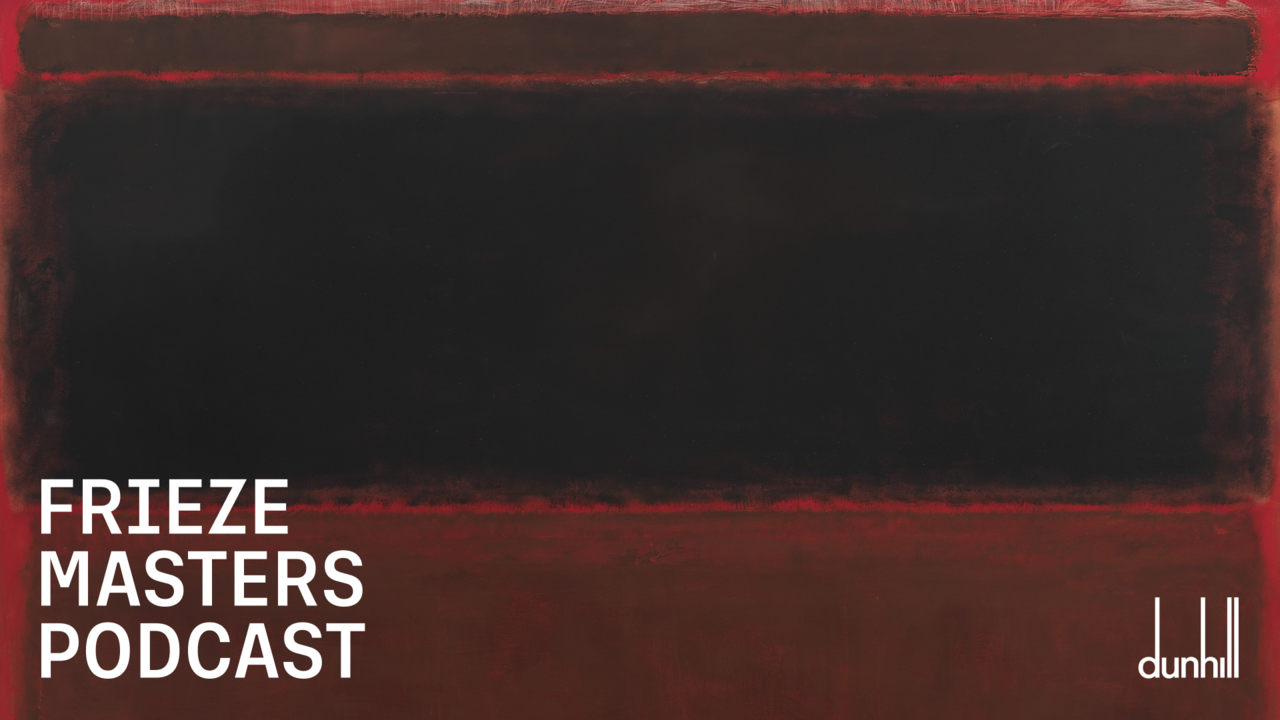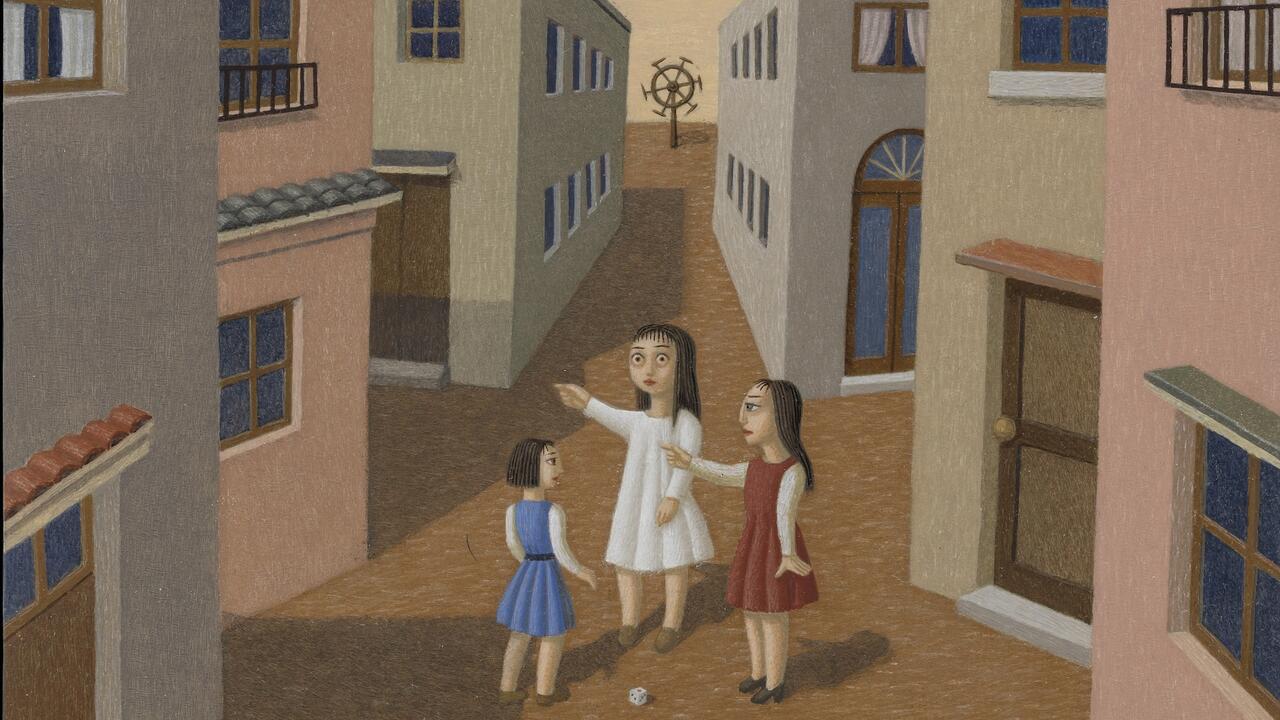Trouble in Paradise
The Sixth International Carribean Biennale
The Sixth International Carribean Biennale
The only people practising their art were the hucksters, spinning their tricky tales for earnest rubes - locals and art tourists alike - under troubled Caribbean skies. How charming they were, how convincing with their props and born-to-the-con wheedling. Sleights of hand pulled critiques out of a hat; issues of globalisation, of art stardom, of art colonialism, were whisked from a sleeve to appear magically out of thin air. Canny art folk looked sideways, thinking they were in on the joke, not the butt of it.
The Caribbean Biennial shimmered for an evanescent week on the island of St Kitts; the agents provocateurs of this absurdity were Maurizio Cattelan and Jens Hoffmann. Sixth in a series of rather unsuccessful and under-attended Caribbean Biennials, this one, like the others, was officially intended to raise the Caribbean's barely discernable profile on the global art circuit. Too often the glut of international biennials - 40 at the last count - are bereft of bite, tedious, predictable and stupefying for the usual art world suspects who participate and attend. Cattelan and Hoffmann's event was a distilled parody, an aggressive re-staging with each of the salient requirements of biennialdom dutifully observed: full page ads, press releases, institutional sponsorship, and a predictable roster of star artists, including Vanessa Beecroft, Mariko Mori, Gabriel Orozco, Pipilotti Rist... etc.
The element of critique resided in the exclusion of what ordinarily is the most important part of any exhibition: the art itself. There was no painting, sculpture or video - no actual physical substrate - at the Caribbean Biennial. This was institutional critique in biennial drag, a collective vacation with around ten artists in attendance, along with a couple of representatives from the fourth estate, and a bare handful of unaffiliated attendees. What were we all doing there, under the auspices of a biennial, when there was no actual art? Many of the same things that we do at other biennials, only without the pleasure and burden of looking at art; oh yeah, and the added bonus of being in the Caribbean. There was a party with a steel band, at which artists danced while no-longer-young British ex-pats looked on; some communal dinners and jaunts into town; mornings waking up with enormous lumps, courtesy of the most fiendish mosquitoes on earth; breakfast swims off a black sand beach; afternoon naps to the jingle of a tropical downpour; and an Italian Vogue shoot that, like almost every other event, took place at the idyllic Golden Lemon Inn where we were all staying. Otherwise, not a thing happened at the Caribbean Biennial.
Born from the mischief of thwarted idealism, and more serious-minded institutional critique, the Caribbean Biennial could be seen as a more ridiculous elaboration of one of Cattelan's previous pieces, Choose your Destination, How to Get a Museum-Paid Vacation (1995), wherein the sponsoring institution paid for the artist's excursion to Miami. Cattelan is part clown, part sage - a cunning instigator clothed as comic idiot savant. I don't trust him. Nobody should, as fostering mistrust of authorial authenticity, and of art systems in general, is part of his restless and wilful conceptual project. This latest manifestation was intended as a hostile takeover of the art world from within, usurping the significance and purpose of international biennials while taking a gleeful swipe at them.
The elaborate press release stated that the biennial would engage with its Caribbean location, offering 'a space for dialogue and building relationships between the international art world and local communities'. Don't buy it. This biennial was even more self-consciously insular than the norm. There was a wilful negation of locale, and, with the exception of the one party, not only were there no Caribbean artists in sight, but no attempt was made to engage or interact with the local community in any way. As a representation of a biennial, it was a portable piece of art that could have as easily been performed in Liverpool, Sydney or Kwangju, its critiques and failings intact. But mere replication of one's object, even with a twist, hasn't been adequate as critique in quite a while.
Despite the event's wide publicity, members of the press were unwelcome, which lead to an unpleasant feeling that something was being got away with, that the public was being played for suckers. The framing device of a biennial led to expectations of viewing art, and its absence meant that the artists themselves became the objects of contemplation. The chronicling of their activities - which consisted entirely of the private, there being no recognisably public component (no lectures, no symposia, no artist's talks) - aroused anxiety and antipathy. The organisers, at certain artists' behest, asked that much of the material gathered by the press, specifically video recordings, be suppressed. A surprising hypocrisy for an impish act of art world sabotage, supposedly anarchic at its core.
The idea of a biennial without art could have been cool in a marvellously vacuous sort of a way, puncturing the self-importance of the art world by grotesquely aping it. What we got was a furtive and ungenerous gesture, a covert V-sign flipped at the art world behind its back, when more balls could have made it a divinely impudent mooning in its face. As a critique, the Caribbean Biennial was neutered when the organisers and some of the artists felt the need to prescribe the biennial's public perception and hide the vacation at its heart. The art was so profoundly and deafeningly absent that some artists took to thinking of themselves as both art stars (whose reputations needed protecting) and art civilians (with commensurate expectations of privacy), while curators took on the role of embarrassed publicists and the spectators of poor cousins at a wedding. There's something sad about so cynical and ambivalent a gesture as the Caribbean Biennial: one would think that a critique of one's own practices would be ethical, even idealistic. Here, the humour was both a performance of aggression and a weapon of despair, another cheerless rehearsal of irony and parody.
But the world looks different from a Caribbean beach. Better. The sky is bluer, the air more gracious, and I am inclined toward generosity (a generosity the organisers could not be accused of sharing). So, let's call the Caribbean Biennial a splendid failure: slightly wonderful but doubtlessly cynical; kudos for the conceptual playfulness but let's just ignore the flawed execution.
In the closing days of the biennial, the location that was so studiously dissed got its own back: the sky turned dead white before Hurricane Lenny came screaming in to make literal the show's subtitle, 'Blown Away', trapping the participants with the utterly humourless force of nature.













